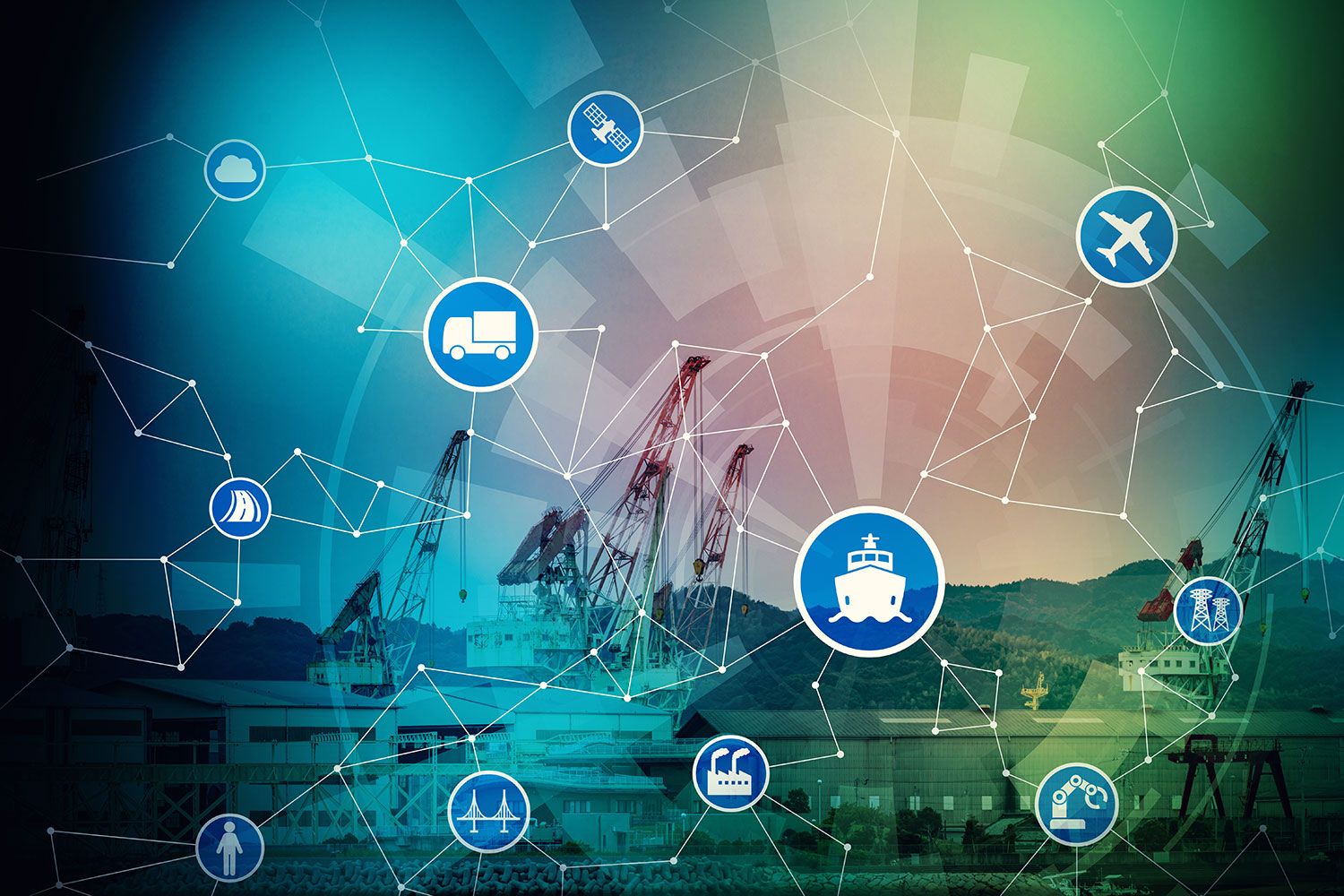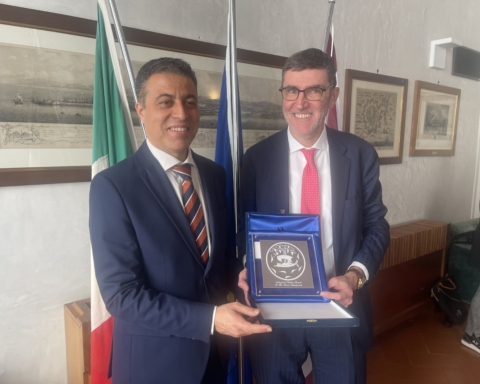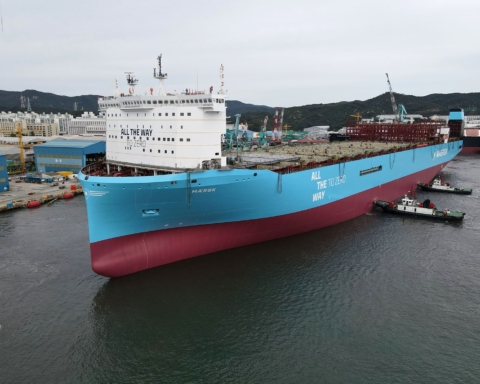At the Global Liner Shipping Asia conference that took place recently in Singapore the conversations were insightful and significantly different from the past when it comes to sustainability and digital transformation. Companies are now much clearer about digitization, which is the replication of the physical world in the digital space as the basis for process and asset automation. Today, ports understand the why, what and how, and work their way through the various challenges. Also, I heard about the digital initiatives of Port of Singapore; the progress made, results achieved and the benefits they now are about to bring home. Among the initiatives are the ‘next-gen vessel traffic management system’ (NGVTMS), the Singapore Maritime Data Hub (SG-MDH) and the indispensable efforts in cyber-physical security. I was impressed by the high levels of accuracy of their estimated time of arrival (ETA) calculations mentioned by a conference participant.
This reminded me that the Singapore government has a holistic vision of a digitized city and state which cuts across many areas. In April 2018, the Maritime and Port Authority of Singapore (MPA) announced a strategy to set the port on a digital path. Needed, when the country wishes to stay among the top ports in a world of slowing trade and rising digitization. Also, the pressure on carbon reduction is increasing. IMO2020 is kicking in “tomorrow”. Although its financial impact is high, the strain on the supply chain will be tiny compared to the funds required to achieve the IMO2050 climate targets.
One opportunity for ports lies in international trade services. The trade services market already exceeds that in goods when measured in value-added terms and is growing more than 60 percent faster than goods trade globally. Telecom, IT, and business services are even growing two to three times faster. Singapore can become a hub of trade finance for South East Asia. Trade services require a digitized environment to start with. Digitization will also play a very important role to bring shipping carbon emissions and costs down. Port digitization has been slow so far. What are the barriers that ports will need to overcome to accelerate the process? The four hurdles that come to my mind are “complexity”, “DNA”, “lack of talent” and “position”. How do the hurdles look in more detail and how does Singapore approach these challenges?
Complexity
Ports are pivotal parts of multi-modal supply chains. They cannot be designed in isolation. Not without factoring in a country’s overall supply chain and logistics system and the links with its trading partners. Maybe because of its size, Singapore has developed a view that goes far beyond the port gates and the country borders. The port of the island-state exchanges data with others, like the Port of Hamburg. Calista, Singapore’s global supply chain platform brings together physical, financial and digital flows to foster national and international collaboration among manufacturers, logistic service providers and other stakeholders. It is the silo of the port itself that needs to be cracked. This requires governments to develop and implement national digital vision within the global digital trade context and help their ports to get equipped to implement them. It requires ports to enhance the “traditional” thinking and prepare to attract digital talent.
DNA
The DNA of ports also poses limitation. Ports are not technology companies. This makes it very hard to build technology solutions on their own. Moving ahead requires government support and technology partners. Singapore has launched its logistics Industry Transformation Map (ITM). The ITM includes an assessible innovation ecosystem, with specialized research capabilities paired with supply chain decision makers. Singapore invests in next-generation facilities with high-specification units that encourage the co-location of companies and drive the use of advanced technologies. Also, MPA of Singapore grants funding to digital startups Also, academia is called upon. Dr Lam Pin Min, Senior Minister of State, Ministry of Transport & Ministry of Health announced in April 2019 that the Singapore Maritime Institute (SMI) will prepare “the Singapore Maritime R&D Roadmap 2030 to optimize R&D efforts and resources for greater value co-creation within the maritime industry”. An entire technology ecosystem for ports is about to emerge to drive port digitization in Singapore.
Lack of talent
Buying advanced technology and partnering with technology companies and startups does not work without digital talent within the port. Ports need to select the most appropriate partners and solutions. Experts ensure proper implementation and integration. Maintenance and continuous development of the systems and tools is mandatory in today’s high pace world. In many countries, the logistics industry, including the ports struggle to attract digital professionals and talent. Singapore’s logistics ITM includes therefore the development of a strong pool of Singaporean talent specifically for the logistics industry.
Position
Ports are regularly found at strategic locations. Therefore, some are hard to avoid. This releases some of the pressures to innovate and quickly digitize. The size of Singapore, the alternative options liners have, and its previous success may force and motivate the island-state to push harder than many other ports. The pain caused by the US-Sino trade war and its impact on the economy may well be a driver too. Also, the proximity to a government with a digital vision and a comprehensive plan helps Port of Singapore in its digitization efforts.
Singapore is a lighthouse in the world of digital shipping. Yet, the island-state acts still to a large extend Singapore-centric. Also, the Singaporean people wish the government to prioritize their direct needs. The globalization debate shows how hard it is for governments to explain, and for people to understand the benefits resulting from cross-border activities and direct investments in other markets. The internet is global and so is digitization. Thriving in the digital era requires to focus as much on the world as on the location where we operate and develop the digital solutions. It requires to import innovation and attract talent and startups from everywhere in the world. Even if this sometimes means breaking some barriers in our heads and hearts.
In a highly connected world with a strong tendency towards a global platform economy, also ports are under pressure to become platforms themselves. This requires digitization. The reward is a much better grip on the resources and assets within the port and supply chain ecosystem. Higher efficiencies, better utilization of assets and new ground for innovative business models are some of the tangible benefits.
There are ports that show the way and Port of Singapore is clearly one of them. Other examples are the Port of Shanghai, the Port of Rotterdam, the Port of Los Angeles and the Port of Hamburg. It is important to connect with the leading ports and governments to learn and replicate, launch and pilot digital projects that have the potential to scale globally and create new digital standards for the port and supply chain industry. The global trade identity (GTID), a brainchild of the authors and contributors of the World Economic Forum white paper “Inclusive Deployment of Blockchain for Supply Chains Part 2 – Trustworthy verification of digital identities” is seen as a foundational step in digital supply chains. Ports, customs and homeland security agencies may wish to pick-up and pilot the concept to advance their digital agendas. There is a new momentum around port digitization – something to be captured and built upon.




